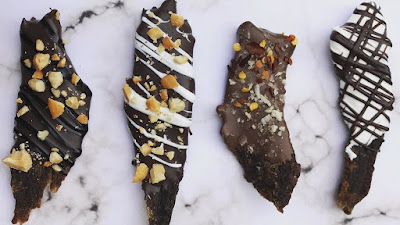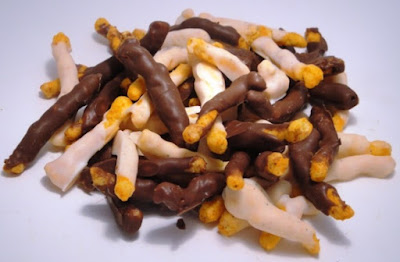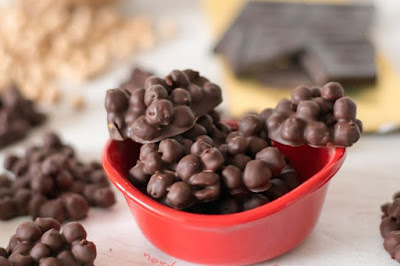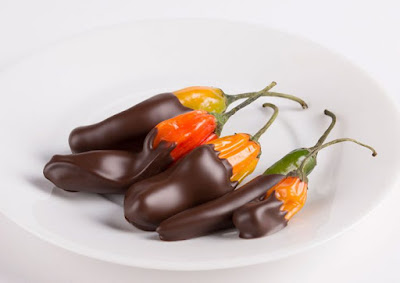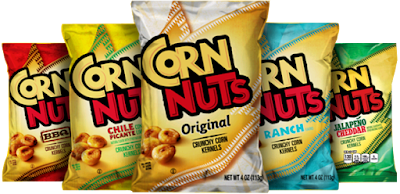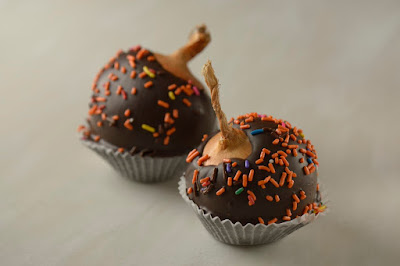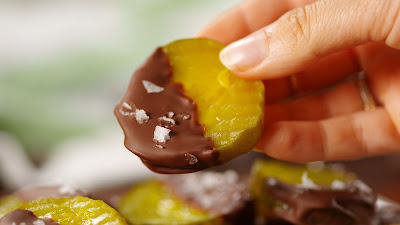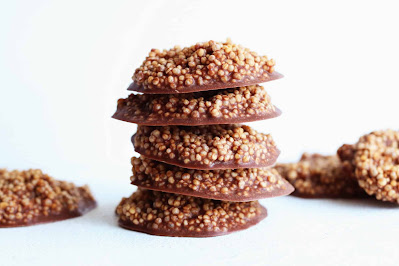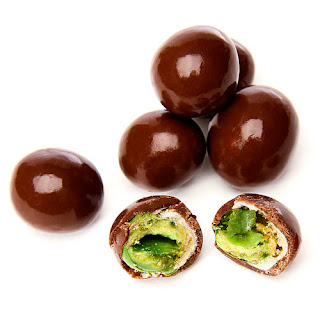|
|
Posted By RCI,
Tuesday, January 17, 2023
Updated: Friday, January 20, 2023
|
 Photo credit: Sour Patch Kids® Photo credit: Sour Patch Kids® “Limited edition” products exist across all industries including technology, fashion, cosmetics and, of course, food. RCI member, Kate Wadman with Cargill Cocoa & Chocolate shares how companies big and small often use this strategy to break through the noise of evergreen activities (known for being relevant, though repetitive) in the market and pull consumers in. Why does this work? At its core, “limited edition” speaks to basic economics of supply and demand. Offering unique items for only a set time can increase demand and create an elevated value for those items, as well as the overall brand. This sense of immediacy and exclusivity kickstarts the desire to buy and experience. “Limited edition” or “special edition” also gives the product a new or never-before-seen feel that generates excitement and plays on consumer FOMO or “fear of missing out.” Consumers are attracted to a new experience for simply that, something new. They also have an innate urgency to engage, because they don’t want to lose out and are fearful they may not have the same opportunity again. Finding Inspiration It’s one thing to create a limited-edition item. It’s another thing to keep the inspiration flowing for an entire line or consistent calendar of goodies. To supplement ideation and creation of special-edition items, look to limited-time offerings in other spaces for inspiration or even to use as an ingredient itself. That’s exactly what Joe Sofia, Cargill Cocoa & Chocolate Technical Advisor, did when tasked with exploring the limited/special edition concept. Additionally, inspired by overarching industry trends of nostalgia and sensory, Joe looked to create a recipe rooted in the limited-time offer mindset, but would also come alive in its experience and pack an emotional punch. Enter Sour Patch Kids® cereal. A much-loved candy since the 1970s, Sour Patch Kids has seen its fair share of expansion into other items, but the recent jump to a cereal inspired by the flavor might be its most unique. And it certainly fit the bill for a unique and special offering. Four simple ingredients later, Sour Patch Kids Bark was born. White confectionery coating served as the canvas for the cereal while preserving texture and a small amount of citric acid crystals amplify the sour. Topping it off with actual Sour Patch Kids candy, added additional color to hit sensory at another eye-popping angle. Click here to download the recipe from Joe Sofia and Cargill Cocoa & Chocolate. Opportunity To Play It’s worth noting that not every limited-edition product works for everyone. It’s important to experiment and play around to create something that speaks to your specific customers. A great part of limited edition is that you’re not committed to it forever. If it doesn’t work, try something else. Once you land on the right flavors and the right mix, your limited-edition product can pack a powerful punch. Crave more?Click here to subscribe and start receiving weekly tips, like this, delivered straight to your email inbox. RCI's blog is just one of the many resources we offer to help candy makers refine their craft and build upon their business and marketing practices. Follow us on Facebook for even more sweet inspiration. Not a member? Click here to learn how RCI can help you build your sweet business.
Tags:
Creativity
Limited Edition
Marketing
Product Development
Recipe
Permalink
| Comments (0)
|
|
|
Posted By RCI,
Tuesday, November 29, 2022
Updated: Friday, January 20, 2023
|
In the popular leadership book 7 Habits of Highly Effective People®, author Stephen Covey identifies the win-win mentality as one of those habits. Covey describes win-win as “a frame of mind and heart that constantly seeks mutual benefit in all human interactions.” I can think of few greater examples of practicing “win-win” in business than by collaborating with a fellow local business to create a new product that highlights the best of both brands.
Cross branding is a marketing and product development tactic that continues to grow traction in the confectionery industry. The possibilities can stretch as far as your imagination allows, but here’s some inspiration.
Craft Beer
RCI member, Hilliard’s Chocolates teamed up with a local brewery to create a craft beer collection featuring beer caramels and beer brittles. The popularity of micro-breweries has exploded in recent years, making it pretty likely there’s a nearby micro-brewery (or two, or three…) that would be happy to team up with your business to develop a unique, new product.
Wine
Even if you don’t live near California wine country, you may be surprised to find a local winery near you. According to
vineyards.com, wine is produced in all 50 US states. Many wines make a great complement to a chocolate ganache center, like in the red wine chocolate truffles by RCI member Stafford’s Chocolates.
Coffee
Partner with a local coffee roaster to develop a signature coffee flavor or a confection featuring their coffee. Known for their Mint Smoothie
®, RCI member Rhéo Thompson partnered with a local coffee roaster to develop a one-of-a-kind coffee blend featuring their signature flavor.
Dairy
Local dairy farms are a great opportunity for sourcing fresh cream and butter for your recipes. Don’t overlook goat milk as an alternative ingredient for customers with dairy allergies.
Fruits & Nuts
Is your region known for producing a specific fruit or nut? If so, you may not have to look too far to connect with local farmers to feature their products in your confections. You may even find this route to be more economical than sourcing those ingredients elsewhere.
Of course, developing a marketing and merchandising strategy is essential to make any cross-branding reach its full potential—you could also benefit by teaming up with the partnering company’s marketing team. Once your new product has been developed send out a press release to the local media announcing your partnership. Make sure to include the partnering company’s logo on your packaging and marketing materials, this will help to sweeten the deal for your partner and make it more likely they will help promote your product. Also, invite them to sell the product in their retail store and e-commerce site to promote the product to their network of followers.
Cross branding is a win-win for all those involved, but especially your customers when they get to enjoy the end result of your sweet collaboration!
Crave more?C
lick here to subscribe and start receiving weekly tips, like this, delivered straight to your email inbox. RCI's blog is just one of the many resources we offer to help candy makers refine their craft and build upon their business and marketing practices.
Follow us on Facebook for even more sweet inspiration.
Not a member? Click here to learn how RCI can help you build your sweet business
.
Tags:
Beer
Coffee
Cross-Branding
Fruit
Marketing
Nuts
Product Development
Wine
Permalink
| Comments (0)
|
|
|
Posted By RCI,
Tuesday, July 28, 2020
Updated: Thursday, July 30, 2020
|
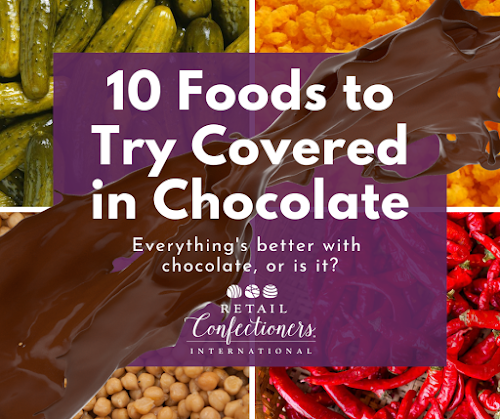
They say everything is better with chocolate, but is it?
We’ve uncovered some oddly popular and some surprisingly tasty pairings. We’ll leave it up to you to determine if they really are better with chocolate.
Beef Jerky
This salty, sweet and chewy combination is sure to stir some excitement among jerky fans. Plus, with so many varieties of jerky available the options are seemingly endless. We suggest adding another element of texture by topping the chocolate coating with crushed nuts, candy pieces, drizzled caramel, dried fruit or savory spices like smoked paprika or red pepper flakes.
Cheetos®
If your customers love your chocolate-covered potato chips, this seems like a natural next step. As an added bonus, coating Cheetos in chocolate will help to avoid the dreaded orange Cheeto fingers.
Chickpeas
Packed with protein and fiber, chickpeas (aka garbanzo beans) are super popular right now—see for yourself with a quick internet search. When chickpeas are roasted, they take on a crunchy snack-like quality. Try coating them in chocolate and sprinkling them with a little sea salt and you are bound to catch the attention of chickpea enthusiasts with this nutritious sweet treat.
Chili Peppers
Chocolate-covered chili peppers—perhaps with a dash of sea salt fall right in line with one of the biggest flavor trends of 2020; spicy-salty-sweet. From habaneros to jalapenos to sweet peppers and everything in between, there’s so many varieties of peppers you decide how daring you want to be. **Bonus points if you stuff peppers with peanut butter.
Corn Nuts
We first learned about this addictive combo while touring the R&D department at The Blommer Chocolate Company in 2017. We give this sweet and savory mix of chocolate and toasted corn kernels two thumbs up. Try it for yourself and tell us what you think.
Onions
Chocolate-covered onions? It sounds like an April Fools’ Day joke. As the story goes, the idea started as a prank. Today Mueller Chocolate Co.’s chocolate-covered onion has developed into a “cult favorite” for tourists and food bloggers visiting Philadelphia. For the record, it is unanimous that the chocolate-covered onion is as disgusting as it sounds.
Peanut Butter Filled Pretzels
Sometimes kids have the greatest ideas. This idea came from the son/grandson of the family business, JoyLyn’s Candies as a sweet snack idea and it was a hit. If you have combined chocolate with peanut butter and chocolate with pretzels, but you’ve never tried the three together, you’re in for a treat.
Pickles
It’s an annual tradition for Malley’s Chocolates of Cleveland to drench dill pickles in chocolate for St. Patrick’s Day—some could say this is the ultimate salty, sweet combination. Unlike the chocolate-covered onion, people seem to really enjoy this wacky combination.
Quinoa
The ancient grain, quinoa, brings along with it a healthy halo. Combine it with dark chocolate and dried superfoods like blueberries—this treat is not only packed with nutrients but it tastes good too. Rather than working with raw quinoa (which might chip a tooth), puffed quinoa is a better medium for coating in chocolate. Puffed quinoa is easy to make yourself (a lot like stovetop popcorn—check out this recipe) or you can buy puffed quinoa (
see here).
Wasabi Peas
If you like the crunch of chocolate-covered Cheetos and the heat of chocolate chili peppers, these little spheres of goodness are the best of both worlds.
Creativity doesn’t have to stop here. You never know where your next creative culinary confection will come from. So, keep experimenting and have fun! And don’t forget to tell people about your next wacky combination on social media, in-store and even through a press release. Creative, out-of-the-box thinking may be just what you need to create buzz and get people to visit your store or website so they don’t miss out on all the fun!
Crave more? If you like what you read here, look for the "Subscribe now" box on the right to enter your email address and start receiving weekly tips, like this, delivered straight to your email inbox. RCI's Tip of the Week blog is just one of the many resources we offer to help candy makers refine their craft and build upon their business and marketing practices.
Not a member? Click here to learn how RCI can help you build your sweet business
.
Tags:
Chocolate
Creative Flavors
Creativity
Food
Idea Sharing
Inspiration
Member Ideas
Product Development
Red Pepper
Spicy
Sweet and Spicy
Trends
Permalink
| Comments (0)
|
|
|
Posted By RCI,
Tuesday, August 21, 2018
Updated: Monday, April 27, 2020
|
When a delighted customer purchases a box of assorted chocolates from your shop, ideally, the box of chocolates would be consumed right away or at least within a week. In the event they are stored away in a cupboard for a special occasion or (dare, I say) forgotten, do you know what your products would look or taste like in two to three, or even four months? This week’s tip offers reasons for obtaining retention samples and advice on how to do so.
It is important to know and understand the shelf life of your products and collecting retention samples is the best way to test product limitations, so you can adjust recipe formulations if issues arise or advise customers on the best timeframe to enjoy your products.
When testing the shelf life of your product, variables, like packaging, must remain the same. For example, when testing your products, make sure they are stored in the same packaging they would be sold in. If they are shrink wrapped before selling (which is highly recommended), shrink wrap the product before storing them for testing. Anticipate how your customers would store your products, if not consumed right away. Would they store them in the refrigerator or in the pantry? Consider a reasonable length of time a consumer may store your products before consuming them. If you are unsure, ask a small group of loyal customers or friends and family.
Over time, enlist experienced tasters (this could be staff members or, again, frequent customers) to review your products for consistency and quality. If you run into issues with product quality, RCI members can login to pose questions to fellow members on RCI’s online forum, List Serve.
Regularly retaining samples of each batch could prove useful if you ever experience a product recall or customer complaints. At a past Chocolate Boot Camp course, RCI member, Candy House Gourmet, shared that they regularly take three samples of every product, label them each with a lot code and freeze the samples in a Ziploc freezer bag for four months. If a customer calls and complains, they can reference the quality of the product when it left their facility.
This week’s tip may require some extra steps and additional storage, however, the benefits of taking a proactive approach to quality assurance often outweigh the risks of not practicing such precautions. Comment below if you take retention samples of your products and what you’ve gained from this practice.
RCI's Tip of the Week blog is just one of the many resources we offer to help candy makers refine their craft and build upon their business and marketing practices. Review past blog posts for quick and actionable tips to apply to your business. Look for the "Subscribe now"box on the right to enter your email address and start receiving weekly tips, like this, delivered straight to your email inbox.
Not a member? Click here to learn how RCI can help you build your sweet business.
Tags:
GMP's
List Serve
Product Development
Quality Control
Shelf Life
Permalink
| Comments (0)
|
|
|
Posted By RCI,
Tuesday, May 15, 2018
Updated: Monday, April 27, 2020
|
Looking for inspiration to launch a new product or add a fresh a new look in your retail shop? Look no further than Pantone’s Color of the Year, Ultra Violet.
Said to evoke originality, ingenuity and visionary thinking, shades of Ultra Violet are increasingly used in packaging and graphic design by forward-looking brands seeking to stand out, according to The Pantone Color Institute.
Incorporate Shades of Violet into Products and Merchandising
Since it was first introduced in December, ultra violet has been the inspiration for apparel, cosmetic and home decor brands as well as well-known personalities and artists. Let ultra violet light the way for your product development efforts and even when ordering gift items and other merchandise for your retail shop.
Create cosmic strawberries with metallic violet luster dust or take a more literal approach by incorporating edible violets into your candies, like Sprinkle Bakes (click here for easy lollipop tutorial). For a fresh spin on homemade marshmallows, add blackberry puree to get a natural violet hue (check out recipe).
Make an Impact with an Ultra Violet Candy Buffet
For maximum impact in your store, group together your favorite ultra violet (and other shades of purple) treats in a candy buffet. Consider adding violet lollipops, foil-wrapped chocolates, Jordan almonds, taffy and jelly beans to create more of a variety.
 |
Gain inspiration from brands like Sephora and Gap for their use of
the color of the year in past product promotions. Images:xriteandSelectism |
Create a Color of the Year Promotion
Pantone is recognized globally as the leading source of color information and trend forecasts. If you’re not already familiar with Pantone, there’s a good chance consumers in your community are, especially if your retail shop is near a university. According to an article published on NYTimes.com, “Pantone [has] tremendous influence over the visible elements of the global economy — the parts of it that are designed, manufactured and purchased.”
December is pretty much the Super Bowl for Pantone, after the Color of the Year is officially announced. You can expect consumer products in industries spanning from fashion to home décor, packaging and beauty products to jump on the bandwagon, why not the candy industry? If this seems like a good fit for your business, now may be a good time to identify these consumers.
Pantone’s color of the year could just be the spark of inspiration you need for a new product launch or fresh merchandising plan. Have you ever used Pantone’s color of the year as inspiration in your business? If so, please share in the comments below.
Tags:
Colors
Marketing
Merchandising
Product Development
Trends
Permalink
| Comments (0)
|
|









